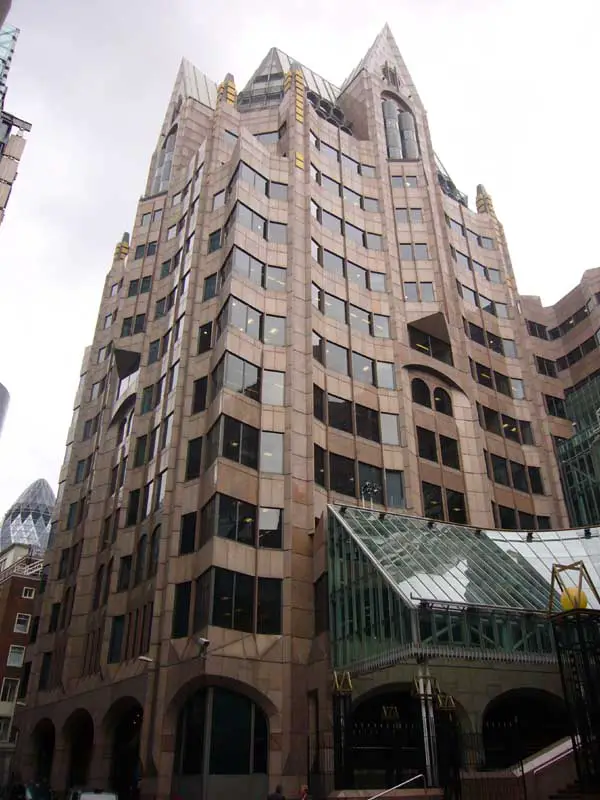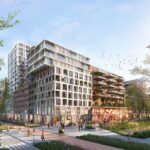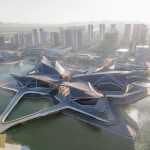GMW Architects Office, London building designs, England, UK property projects, English architecture studio news
GMW Partnership : Architecture
Contemporary British Architects Practice News and Information.
post updated 15 December 2024
GMW Partnership – Key Projects
Featured Developments by GMW Partnership, alphabetical:
Ataturk Airport – International Terminal, Istanbul, Turkey
Date built: 2004
54 Lombard St, City of London, England, UK
Date built: 1993
Located just west of Lloyds Building
Minster Court, Mincing Lane, City of London, England
Dates built: 1988-91
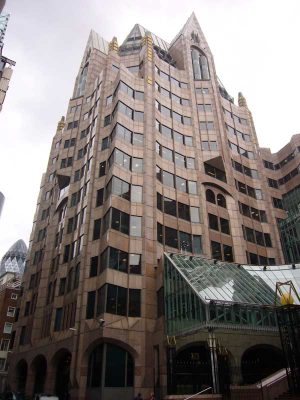
photograph © Adrian Welch
Minster Court : unusual neo-Gothic office building, £178m
Nat West Tower refurbishment, 25 Old Broad Street, City of London, England
Date built: 1995
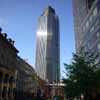
photo © Adrian Welch
Nat West Tower
GMW Partnership – Project Descriptions
41 Lothbury, City of London
–

photo © Sectorlight Sutton Young
41 Lothbury is part of the cluster of historic buildings at the heart of London’s Square Mile that symbolise the essence of the City as a global financial institution. The building is a Grade II* listed former bank headquarters and its redevelopment has produced a rich blend of contemporary office space with the unique style and elegance of a traditional City landmark.
Uncompromisingly modern, but nonetheless discreet additions have been made to the retained elevations. These improve the building’s office space and circulation. New office floors are planned around an atrium, which together with full-height glazing to the upper levels of the northern and eastern elevations, brings ample daylight into the office space.
The refurbishment of the Portland stone façades and the impressive marble-clad banking hall give a new lease of life to the fabric of the building, demonstrating that these historic buildings can be successfully reused and enjoyed as part of a vibrant commercial workplace.
125 Old Broad Street, City of London
–

photo © David Churchill
125 Old Broad Street contributes to the backdrop of the iconic City core that is home to the Bank of England, the Mansion House and the Royal Exchange. It is at the centre of an important area of townscape and symbolism, with the surrounding buildings acknowledged as some of the most architecturally and historically significant in the City.
Hammerson UK Properties purchased the site in 2004 and appointed GMW Architects to secure revisions to a planning consent previously obtained by Grimshaw and to deliver the project.
The existing cladding was removed and additional structure has enabled new floor space to be cantilevered beyond the original building line. The new cladding reinforces the verticality of the tower and gives the building an elegant, contemporary appearance.
The original podium was demolished and a new seven-storey building constructed in its place. This is clad in the same materials as the tower.
International Terminal, Istanbul Atatürk Airport, Turkey
–

photo © Murat Öztürk
The design of the terminal, together with its underground rapid-transit rail station and neighbouring car park, was inspired by a desire for simple and instinctive passenger routes between land side and the aircraft.
Both the terminal and the piers are arranged on three levels, with a spine of service and circulation cores marking the landside-airside boundary. The departures area is the defining space of the project; its 240 by 168 metre roof structure is easily identifiable from the air and clearly expressed in the interior. This space floods with diffused daylight through the north-facing skylights and this emphasis on natural light has been carried through to the arrivals level, with fully glazed corridors along the piers and landscaped courtyards within the terminal.
To protect the building from earthquake in this seismically active area, innovative structural isolators allow the large roof to move independently of the supporting structure.
A modular and linear form was chosen for the terminal with the potential for expansion in mind and this has proved an effective strategy. A second phase of construction has been completed with minimum disruption of operations and the design capacity of the terminal is now 20 million passengers per year.
Chichester House, High Holborn, London
–
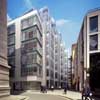
image © GMW Architects
This new office and residential development for Hines UK is located on High Holborn in London. It is flanked by an historic alleyway, Great Turnstile, and also faces south towards Lincoln’s Inn Fields. The building’s architecture responds to these three very different urban environments with a restrained, limestone and glass façade addressing High Holborn, and an echelon form to Great Turnstile, which opens up to form an intimate urban space and provide oblique views south towards the green expanse of Lincoln’s Inn Fields.
CIPD Headquarters, Wimbledon
–
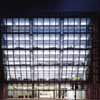
photo Peter Cook © PeterCook/View
As befits the United Kingdom’s leading body in personnel management and development, CIPD had clear and demanding expectations of their own workplace. Their brief called for a modern, light and open building that would be environment and people friendly; a building that would convey distinction and reinforce their brand. 151 Broadway lives up to these high expectations, fostering a strong sense of community in an open-plan environment that provides a variety of stimulating and comfortable spaces.
The construction uses well-tried techniques in innovative ways, with components made to work at maximum efficiency in a building designed to utilise passive environmental control as part of a low-energy strategy.
There is an underlying clarity and honesty in the use of materials and there is no suspended ceiling to conceal the structure, which allows the thermal mass of the concrete slabs to provide natural cooling.
I&TD Building, Hanslope Park, Buckinghamshire, England
–

photograph © David Churchill
The commission for the new Foreign and Commonwealth Office facility at Hanslope Park allowed GMW to bring together ideas for sustainability, space planning and new ways of working. The project provides protected accommodation for the FCO’s network infrastructure and 400 staff.
The building has a reinforced concrete frame, with a steel structure supporting the atrium roof. The thermal mass of the concrete is an integral part of the energy strategy that also relies on natural air movement, heat recovery and efficient building systems. Solar shading minimises heat gain and responds to orientation to achieve maximum benefit, with vertical fins on the west façade, horizontal fins and louvres on the south and a canopy on the east. Timber cladding and joinery are sustainably sourced.
Midsummer Place Shopping Centre, Milton Keynes, England
–
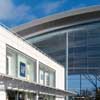
photo Peter Cook © PeterCook/View
Midsummer Place is a major extension to Milton Keynes’ existing shopping centre, which forms the core of this New Town. Its design complements the heroic forms of the original with an equally modern, though perhaps freer and more varied series of spaces.
The link between Midsummer Place and the existing retail malls, known as Midsummer Boulevard, gives the project a civic dimension. This space is the size of a football pitch and houses independent pavilions containing shops, restaurants and cafés. It is covered by an eighteen-metre-high wave-form roof with clear-glazed elevations.
Network Rail National Centre, Milton Keynes, England
–
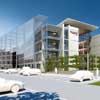
image © GMW Architects
Network Rail’s brief for their new National Centre requires that the new building achieve a BREEAM ‘Excellent’ rating for its environmental performance. This has made energy efficiency and sustainability key drivers in the design process and, in addition to naturally ventilated and passively cooled office space, the building will use power and heating from the local district energy scheme. The development will accommodate 3,000 staff in four office buildings linked by an internal street.
Tower 42, City of London
–
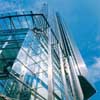
photo Anthony Weller © Anthony Weller/Archimage
This building is a landmark on the London skyline and was formerly the NatWest Tower by R Seifert and Partners. GMW Architects’ refurbishment, completed in 1998, enabled major enhancements to the office space and gave the building a new lease of life, with upgraded services, improved cladding performance and an extra 2,000m2 of usable space within the original building profile.
Two London Bridge, Southwark, London
–

photograph © David Churchill
The project has transformed a Grade II listed Victorian building and its 1960s extension to become the 4,850m2 headquarters of private bank, Ansbacher. The Victorian building, ‘Hibernia Chambers’, has been refurbished and its internal core arrangements remodelled, while the extension has been stripped back to its concrete structure and re-clad in clear, full-height glass panels that reveal its internal form and enhance the superb views of the River Thames and Southwark Cathedral.
A new entrance pavilion was added in the form of a three-level glazed structure designed to relate both to the scale of the tower and the context of Old Broad Street.
More projects by GMW Partnership online soon
Location: London, south east England, UK
London Architects Practice Information
GMW Partnership architect office based in London, England
GMW Partnership : Gollins Melvin Ward & Partners
Website: https://www.scottbrownrigg.com/
London Architectural Designs
London Architecture Designs – chronological list
London Architecture Designs – architectural selection below:
Architecture: Mæ
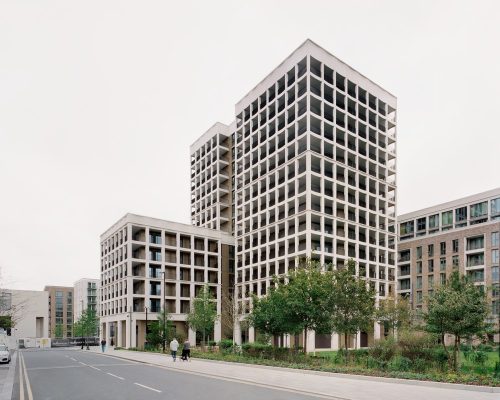
photo courtesy of architects firm
Pinnacle House, Royal Wharf Newham
London Architecture : news + key projects
Buildings / photos for the GMW Partnership Architecture pages welcome.

